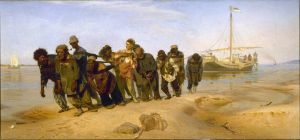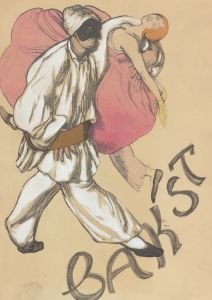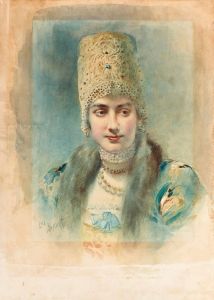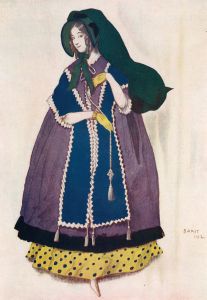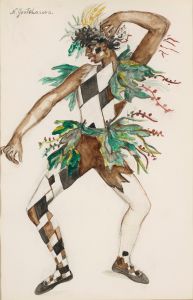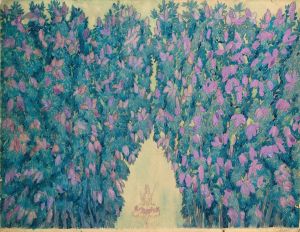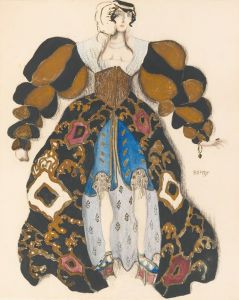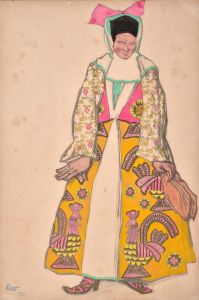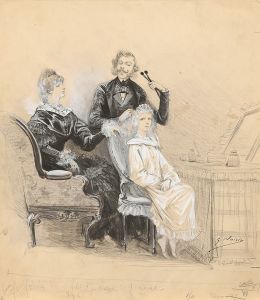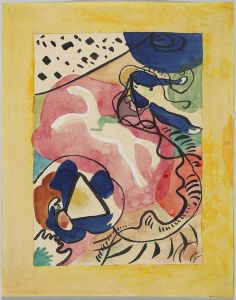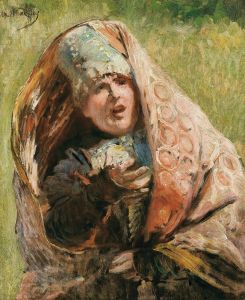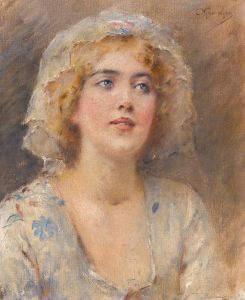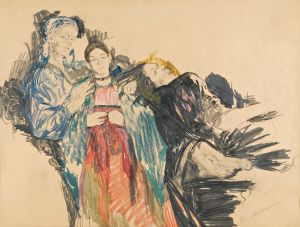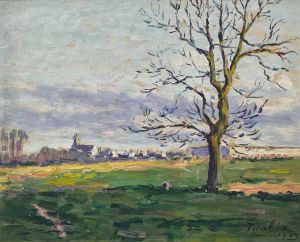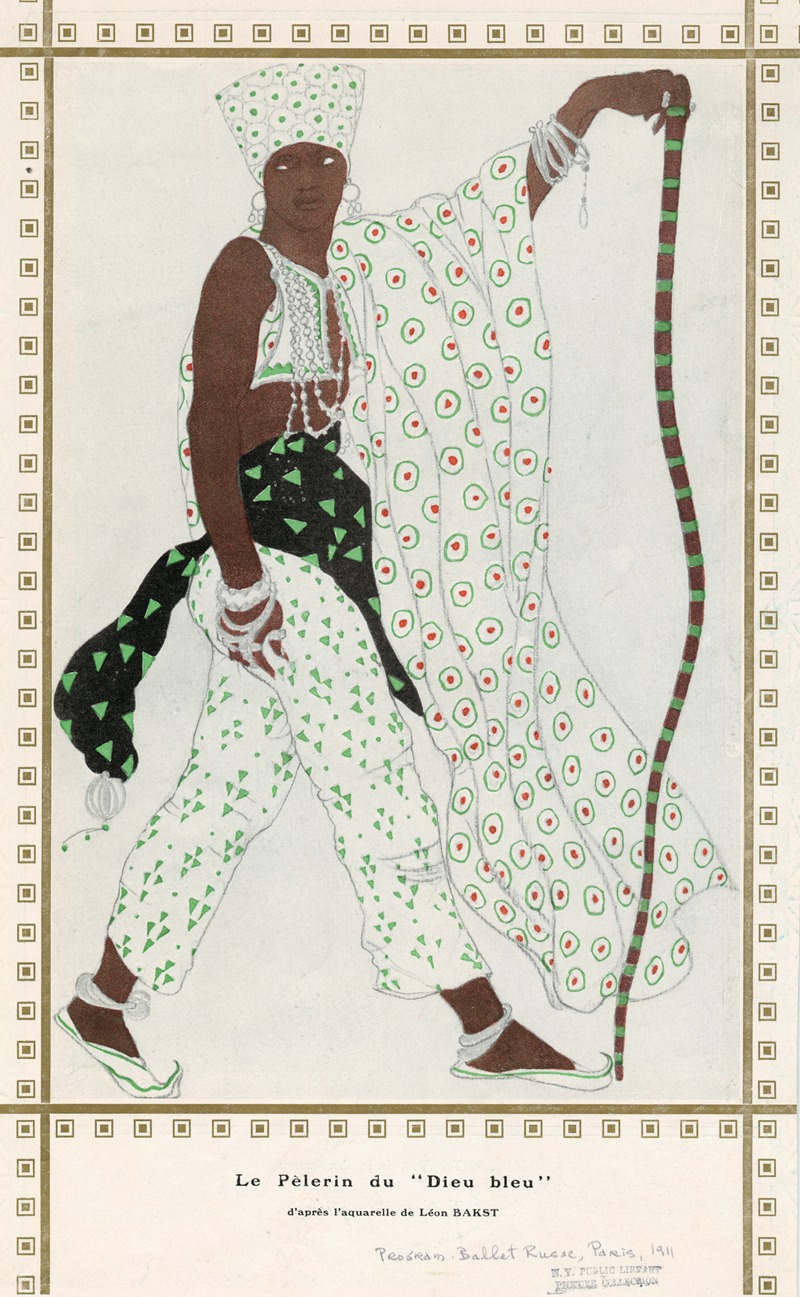
Le Pèlerin du ‘Dieu bleu’
A hand-painted replica of Léon Bakst’s masterpiece Le Pèlerin du ‘Dieu bleu’, meticulously crafted by professional artists to capture the true essence of the original. Each piece is created with museum-quality canvas and rare mineral pigments, carefully painted by experienced artists with delicate brushstrokes and rich, layered colors to perfectly recreate the texture of the original artwork. Unlike machine-printed reproductions, this hand-painted version brings the painting to life, infused with the artist’s emotions and skill in every stroke. Whether for personal collection or home decoration, it instantly elevates the artistic atmosphere of any space.
Léon Bakst was a renowned Russian painter and scene and costume designer, best known for his work with the Ballets Russes, a famous itinerant ballet company based in Paris. His contributions to the world of art and theater were significant during the early 20th century, and his designs were celebrated for their vibrant colors, exoticism, and innovative style. One of his notable works is "Le Pèlerin du ‘Dieu bleu’" (The Pilgrim of the 'Blue God'), which is part of his extensive portfolio of theatrical designs.
"Le Pèlerin du ‘Dieu bleu’" is a costume design created by Bakst for the ballet "Le Dieu bleu" (The Blue God), which premiered in 1912. The ballet was a production of the Ballets Russes, with music composed by Reynaldo Hahn and choreography by Michel Fokine. The libretto was written by Jean Cocteau and Federico de Madrazo y Ochoa, and it was inspired by themes from Hindu mythology, which was a popular source of inspiration in the early 20th century as Western artists and audiences were increasingly fascinated by Eastern cultures.
Bakst's design for "Le Pèlerin du ‘Dieu bleu’" reflects his signature style, characterized by bold colors, intricate patterns, and a sense of movement and drama. The costume is notable for its rich use of color and elaborate detailing, which were intended to capture the exotic and mystical atmosphere of the ballet. Bakst's work often incorporated elements from various cultures, and in this design, he drew inspiration from Indian art and traditional costumes, blending them with his own artistic vision to create something unique and theatrical.
The ballet "Le Dieu bleu" itself was not as successful as some of the other productions by the Ballets Russes, but Bakst's designs were widely praised and have been remembered as a highlight of the production. His ability to convey a sense of otherworldliness and fantasy through costume design was a key factor in the visual impact of the performances. Bakst's work for the Ballets Russes played a significant role in shaping modern stage design and has influenced generations of designers.
Léon Bakst's contribution to the arts extends beyond his work with the Ballets Russes. He was a prominent figure in the world of art and design, and his influence can be seen in various forms of visual and performing arts. His innovative approach to costume and set design helped to redefine the visual language of theater and ballet, making him a pivotal figure in the history of modern art.
In summary, "Le Pèlerin du ‘Dieu bleu’" by Léon Bakst is a testament to his artistic genius and his ability to blend cultural influences into a cohesive and captivating design. While the ballet it was created for may not have achieved lasting fame, Bakst's work continues to be celebrated for its creativity, vibrancy, and impact on the world of art and theater.





